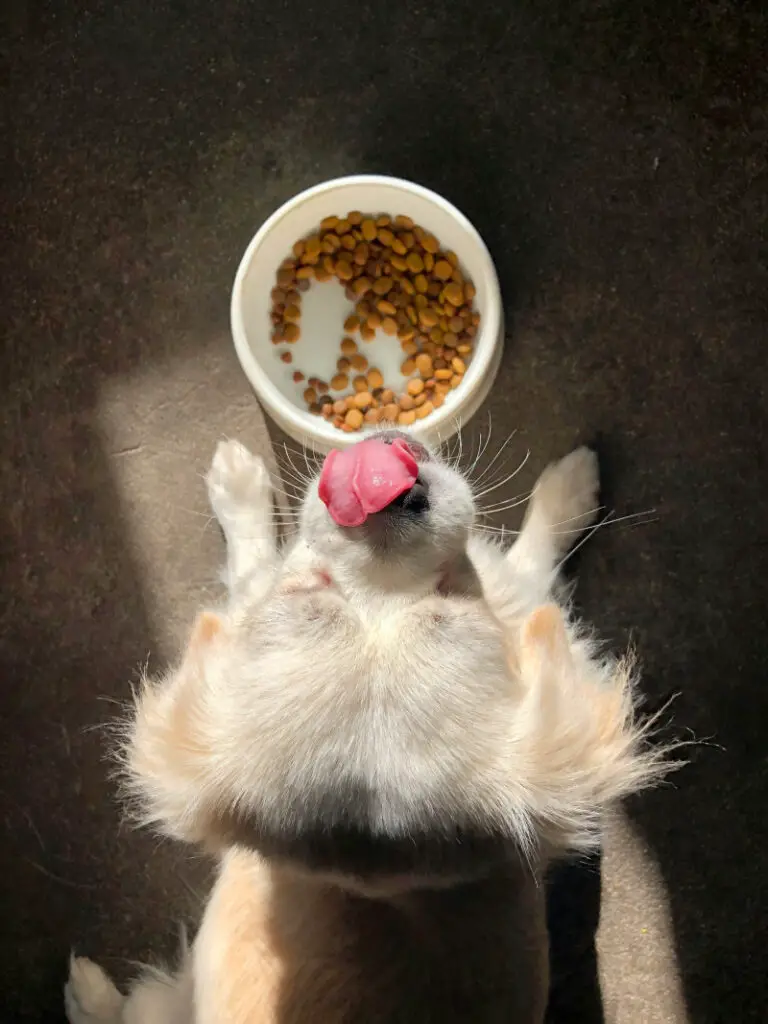It’s a universally acknowledged truth that dogs are more than just pets, they’re family. As dog owners, one crucial piece of knowledge we must grasp is the dietary restrictions of dogs. More explicitly, the understanding of dangerous and toxic food for dogs is pivotal for their health and wellbeing.
Many of us unknowingly, yet regularly expose our furry companions to potential harm by feeding them foods that are harmful to their health. Varying from mild discomfort to severe or even fatal health complications, the ingestion of these toxic foods can critically affect our dogs’ health.
Dogs, much like humans, are omnivorous. They can enjoy a wide range of foods—meat, vegetables, fruits, and grains. Despite this diverse palate, specific universal food restrictions apply to all breeds and sizes of dogs. Certain human foods, regardless of their nutritional value for us, can be hazardous, or even deadly, for our canine companions.
To ensure the safety of your dog, unmasking what constitutes a harmful or potentially toxic food is crucial. This knowledge will protect your friend from preventable or even lethal health crisis triggered by their diet. Thus, being aware of harmful dog foods and their consequences on your precious companion is vital.
Our primary focus in this discussion is to shed light on these dangerous edibles. By casting a spotlight on this uncharted terrain, you will be privy to the potential threats lurking in the seemingly innocent food items. Equipped with knowledge and resolute attentiveness, you as a dog owner will be better capable of preventing accidents and warding off potential nutritional hazards that could endanger your pet’s life.
This comprehensive guide aims to serve as your trustworthy navigator in the confusing sea of canine nutrition. Accurate information is key to maintaining the health and happiness of your dog. This extensive exploration into the world of unsafe dog food will empower you to make informed choices that will directly affect the longevity and vitality of your dog. The well-being of your four-legged friend reflects on the commitment and concern you show towards mastering every facet of their care, such as their diet.
Thus, fasten your seatbelt for an enlightening journey that dismantles preconceived notions and mythologies about dog nutrition. This pursuit of knowledge promises to strengthen the bond between you and your pet, enrich your cohabitation, and ensure you enjoy plenty more blissful, healthy years together.
Table of Contents
Common Household Fruits and Vegetables That Are Toxic to Dogs
While fresh fruits and vegetables are generally considered beneficial for human consumption, it’s crucial to know that the same rule doesn’t necessarily apply to dogs. Certain types of fruits and vegetables can constitute harmful dog foods that could potentially compromise your pet’s health.
Listing Various Fruits, Like Grapes and Avocados
Many different fruits can pose various risks to your dog’s well-being. In particular, grapes, raisins, as well as avocados, are among the most concerning, as consumption of these fruits can lead to harmful or even fatal consequences.
The Toxicity of Grapes in Dogs
Despite appearing innocent and tasty, grapes and raisins are among the most lethal pet edibles available. According to veterinary professionals, both can cause sudden and rapid kidney failure in dogs. The exact toxic agent in these fruits is still unknown, but it’s clear that even in small amounts, these can be severely detrimental to a dog’s health, leading to serious illness or even death.
Reporting on How Avocados Can Harm Dogs
Contrarily, avocados – though highly nutritious for humans – comprise canine poisonous food. The toxic substance in avocados, known as persin, can cause vomiting and diarrhea in dogs. Although the fruit’s flesh contains less persin, its bark, seed, and leaves have a high concentration of the toxicant, making them severely unsafe for dogs.
Mentioning Unexpected Fruits Like Cherries
Cherries, another seemingly harmless fruit for humans, also rank as one of the many harmful foods for pets—particularly dogs. This fruit contains cyanide, which can be toxic to dogs if ingested in large amounts. Symptoms of consumption include dilated pupils, difficulty in breathing, and red gums. Therefore, it’s best to keep cherries out of your pup’s reach.
Sharing Vegetables Like Onions and Garlic
A similar hazard concerns multiple common vegetables, such as onions and garlic, which can be toxic ingestion for dogs. To safeguard your pet’s health, exclude these culinary staples from their nutrition.
Exploring the Harmful Elements in Onions
Onions, irrespective of their form—cooked, raw, or powdered, are included in the list of harmful dog foods. This is due to a toxin called thiosulphate, which can lead to hemolytic anemia, causing damage to red blood cells in dogs.
Discussing The Aspect of Garlic
Although garlic may offer health benefits for humans, for dogs, it’s categorized under dangerous canine treats. Garlic contains thiosulfate like onions, which can be toxic for dogs. While the effects of garlic toxicity are less severe than onions, excessive consumption can potentially lead to harmful health outcomes like lethargy, elevated heart rate, and anemia.
Pointing Out Other Problematic Veggies Like Mushrooms
While not all mushrooms are harmful, some can be deadly toxic and should be strictly avoided. Certain species contain varying levels of toxicity, causing a range of symptoms starting from gastrointestinal distress to, in worst cases, death.
Indicating The Problematic Nature of Certain Nuts
It’s important to be conscious about feeding nuts to dogs as well. Some nut variations are classified under detrimental dog foodstuffs, such as macadamia nuts and almonds.
Detailing Why Macadamia Nuts Can Be Deadly
While macadamia nuts may seem like a perfectly harmless treat for dogs, they can cause severe problems. A dog that has ingested macadamia nuts might experience weakness in the back legs, vomiting, tremors, and hyperthermia. Just a small amount can make a dog sick, thus, macadamia nuts should never be accessible to dogs.
Emphasizing the Potential Toxicity of Other Nuts
Almonds, while not as toxic as macadamia nuts, can also pose threats to your dog’s health. Due to their hard texture and size, almonds might cause choking risks and intestinal blockages, particularly in smaller dogs. Even in larger dogs, ingestion of almonds can lead to gastrointestinal upset or even pancreatitis.
This guide to common toxic foods for dogs should make you mindful about what you’re feeding your dog. Being knowledgeable about these risks can protect your furry family member and avoid unnecessary distress or harm.
Identifying Harmful Human Snacks and Beverages
While sharing our snacks and beverages with our beloved dogs can be a bonding experience, being selective is necessary. Several human goodies fall under the detrimental dog foodstuffs category and should never be shared with our canine friends.
Outlining the Toxicity of Chocolate
Chocolate, a universally beloved treat, unfortunately, is on the list of lethal pet edibles. Indulging dogs with chocolate might seem harmless or even loving, but the reality could be harshly different.
Unveiling the Element in Chocolate That Causes Harm
The key ingredient of chocolate, theobromine, although perfectly safe for human consumption, acts as a canine poisonous food. Theobromine, along with caffeine, both found in cocoa seeds, stimulate the nervous system and cardiovascular system. While humans can process and excrete these stimulants efficiently, dogs process them far more slowly, leading to a build-up of toxic levels in their system.
Highlighting the Severity of Chocolate Poisoning
Signs of chocolate poisoning can range from mild to severe. Mild symptoms include restlessness, excessive thirst, bloating, vomiting, and diarrhea. If a dog has ingested a large amount of chocolate, the symptoms can escalate to irregular heart rhythm, seizures, heart failure, and unfortunately, even death.
Differentiating the Risk Between Dark and Milk Chocolate
The amount of theobromine varies in different kinds of chocolates. Dark chocolate, cocoa powder, and baking chocolate contain higher levels of theobromine, making them the most toxic to dogs. However, even milk chocolate can be unsafe if consumed in large portions.
Describing the Dangers of Caffeine and Alcohol
Next on the list of harmful dog foods are human beverages – specifically those that contain either caffeine or alcohol. Such beverages should never be part of a dog’s diet as they can result in serious health complications and even prove fatal.
Talking About the Influence of Caffeine on Dogs
Caffeine is another stimulant that dogs’ systems cannot efficiently process. An accidental sip or two might not harm a dog, but larger quantities could lead to caffeine poisoning. This condition manifests in restlessness, rapid breathing, heart palpitations, muscle tremors, and in severe cases, seizures.
Connecting Alcohol to Toxicity
Alcohol’s effects on dogs are similar to its effects on humans – but it takes far less to harm dogs. Alcohol is rapidly absorbed into the bloodstream and affects the central nervous system. It can lead to a lack of coordination, abnormal behavior, disorientation, and even induce a coma or cause death in serious cases.
Painting a Picture of the Potential Impact
Alcohol and caffeine, while seemingly harmless day-to-day indulgences for humans, can have deadly ramifications for our beloved canines. Understanding the substantial risks associated with these substances is essential for preventing potential harm to your pet.
Highlighting the Risks Associated with Sweeteners, Like Xylitol
Finally, let’s discuss sweeteners – particularly xylitol, a common artificial sweetener found in many human foods, especially those marketed as ‘sugar-free’ or ‘diet.’
Fleshing Out the Risks of Sugar-Free Gum
Xylitol is a well-known sugar substitute prevalent in sugar-free gum and other sugar-free products. Despite being safe for human consumption, it leads to a rapid release of insulin in dogs, causing hypoglycemia (low blood sugar). This reaction can occur from 10-60 minutes after consumption and could be life-threatening for your dog.
Shedding Light on Why These Sweeteners Are Toxic
Xylitol and other artificial sweeteners are harmful because dogs’ bodies react differently compared to human bodies. In dogs, the swift release of insulin leads to a rapid decrease in blood sugar levels, which can cause disorientation, seizures, and liver failure. It is, thus, imperative to keep products containing xylitol out of your dog’s reach.
With this information at hand, it is clear that many human foods and drinks are not suitable for dogs. By knowing what is in your dog’s diet, as a responsible pet parent, you can prevent the consumption of unsafe dog nourishment and ensure your pet’s wellbeing.
Unmasking the Potential Poison in Everyday Foods and Spices
Awareness about harmful dog foods extends beyond simply avoiding the obvious dangers. Several routine kitchen ingredients can cause a degree of harm to dogs, though we often overlook them. From certain everyday foods to commonplace spices, the list of potential threats is quite extensive.
Listing Foods Like Raw Yeast Dough
Some regular kitchen items, such as raw yeast dough, under-cooked food and certain other regular foods pose significant threats to dogs. Their ingestion could lead to serious health complications and, therefore, must be kept out of reach of your furry companion.
Discussing the Effects of Raw Yeast Dough
Raw yeast dough, a common component of homemade bread and pastries, counts among the notable examples of dangerous puppy chow. The live yeast ferments the dough, releasing alcohol that can be absorbed in a dog’s bloodstream. This can lead to alcohol poisoning, which, in severe scenarios, might be fatal to a dog.
Drawing Out the Impact of Under-Cooked Food
Under-cooked food, especially meat, poses various risks to dogs, like bacterial infections, food poisoning, and digestive troubles like vomiting or diarrhea. Hence, ensuring that the food is well-cooked before serving it is a must to prevent dog food hazards.
Spilling Light on Other Regular Foods as Threats
Everyday food items like corn-on-the-cob and cooked bones might seem harmless but can cause intestinal blockages in dogs. Although dogs have a reputation for bone-chewing, cooked bones have a higher probability of splintering and causing tears or blockages in the intestines. Thus, these are better avoided.
Stating the Potential Harm of Spices Like Nutmeg
Spices play an integral role in our cooking and baking, adding flavor and richness to our dishes. But did you know certain spices can be potentially harmful pet food? Among them, nutmeg stands out due to its severe toxicity to dogs.
Unpacking the Risks of Nutmeg
Nutmeg contains a toxin called myristicin. In dogs, myristicin ingestion can lead to hallucinations, disorientation, increased heart rate, high blood pressure, abdominal pain, and seizures. Therefore, keeping your nutmeg-laden baked goods safely out of your dog’s reach is vital.
Comparing these with Common Spices Dogs Can Consume
It’s noteworthy to mention that not all spices are deadly food items for dogs. Spices like turmeric, for instance, are entirely safe and actually beneficial for dogs if used moderately. But, it’s crucial to distinguish the safe spices from the harmful ones.
Viral Food Trends That Could be Harmful
The latest viral food trends often come with hidden risks to your pets. It is important to double-check each ingredient involved before jumping on board with a culinary trend, particularly when sharing with your dog. This proactive measure can shield your pet from toxic ingestion and unnecessary suffering.
Discussing the Consequences of a Dog’s Exposure to These Dangers
Encountering these harmful substances can put a dog’s health in grave jeopardy. These unsafe kitchen staples can trigger a host of immediate physical symptoms and potentially long-term impacts.
Explaining Immediate Physical Symptoms
Post-ingestion, symptoms can range from loss of appetite, salivation, vomiting, and abdominal pain to more severe symptoms like seizures, tremors, or irregular heart rhythm, depending on the toxicity of the ingested substance.
Delving into Long Term Impacts
The long-term impacts of ingesting harmful foods include a compromised immune system, possible liver or kidney damage, and other organ failures or damage that can drastically reduce your pet’s lifespan and quality of life.
Unveiling these potential threats hidden in regular foods and spices emphasizes the need for vigilance in preserving your pet’s wellbeing. Incorporating this knowledge into your daily routine holds the key to safeguarding your dog against the perils lurking in your kitchen.
Finishing Thoughts on Maintaining A Safe Diet for Your Cherished Canine
Throughout this comprehensive exploration of harmful dog foods and toxic ingestion for dogs, our collective journey took us through the crucial knowledge every dog owner needs. Unpacking the potential dangers lurking in everyday foods, snacks, and even spices underlines the importance of prolonged vigilance in caring for our precious pets.
We segmented various foods into toxic and non-toxic categories, ranging from ordinary fruits and vegetables to common human snacks and beverages. We unveiled that certain everyday treats like chocolate, certain fruits like cherries, everyday foods such as raw dough, and common kitchen ingredients like nutmeg can lead to adverse, even fatal health complications for our dogs.
We also differentiated between the effects of various toxic foods on dogs. This understanding brings home the point that just because a substance seems harmless, even beneficial to us, doesn’t mean it’s safe for our pets. The health outcome of these substances can range from mild discomfort or illness to dangerous health complications or even death. Thus, dog owners should remain committed to excluding these specifics from their pets’ diet and take steps to ensure their dogs aren’t ingesting these potentially dangerous food items.
So, what measures can dog owners like you take to protect your beloved pooch from these risky dog cuisine elements? A proactive step is eliminating any harmful food items from your dog’s reach. Conducting in-depth research and paying attention to food ingredient labels can prevent any accidental ingestion.
Another critical measure is educating household members about these harmful foods and properly storing them where your dogs can’t access them. This ensures your dog’s safety in your home environment without any compromising situations.
It’s a good idea to have your vet’s phone number handy or a pet poison helpline in case of an emergency. Quick response and immediate consultation can make a significant difference in a situation of potential poisoning. Every minute counts and can make the difference between a mild health scare and a serious, potentially lethal health condition.
In conclusion, this deep dive into the world of perilous dog edibles reinforces our mindfulness about the obligation we carry as dog parents. It underlines the importance of ensuring the diet we provide for our canine companions adheres to safety standards and is free from harmful ingredients. By being conscientious and informed, you’ll not only extend the lifespan of your beloved dog but also ensure their lives are filled with good health, vitality, and happiness. From this moment forward, you’re not just a dog owner, but a gatekeeper of their health, a protector against potential hazards, and a provider of a safe, healthy diet for them.




